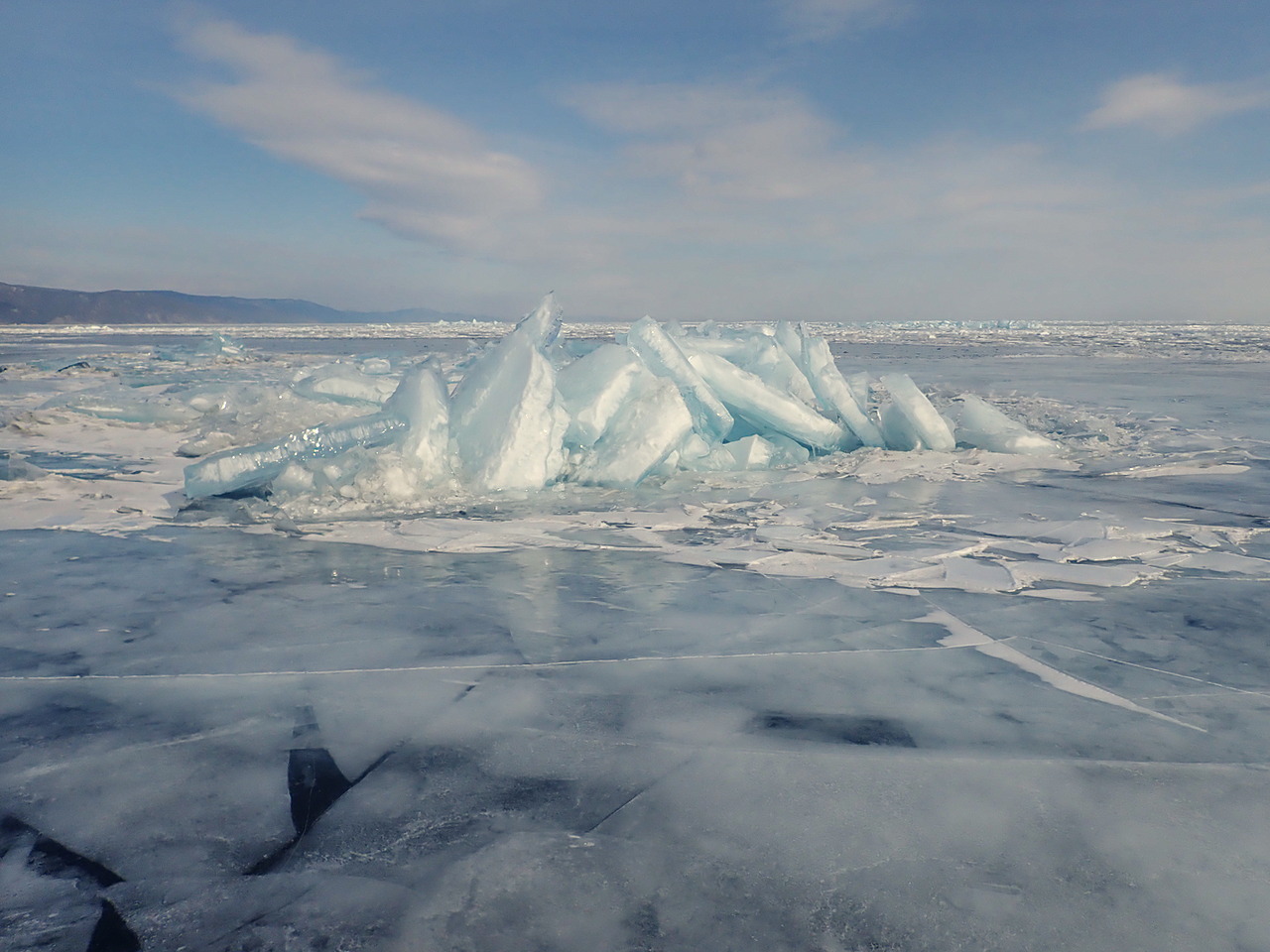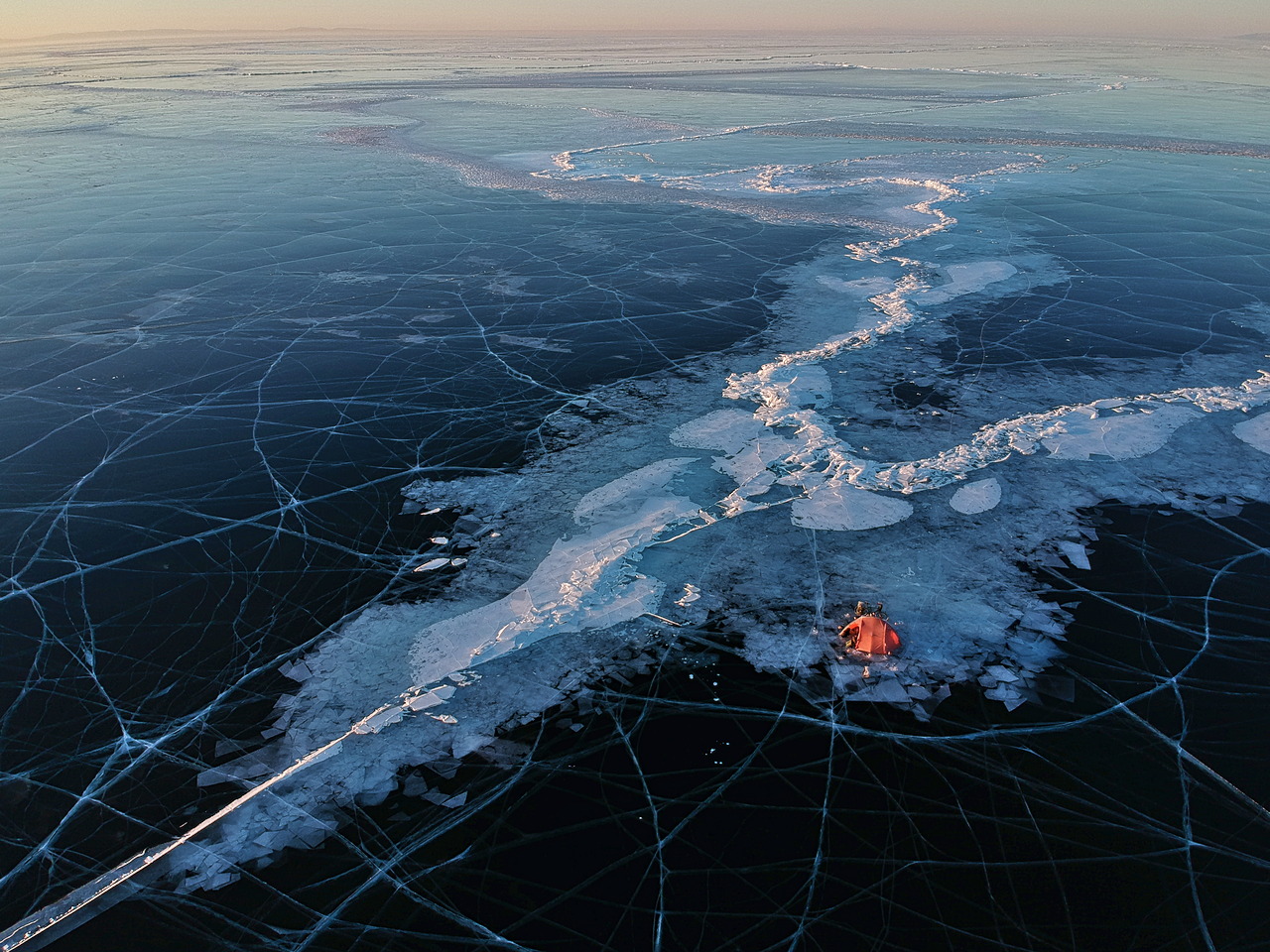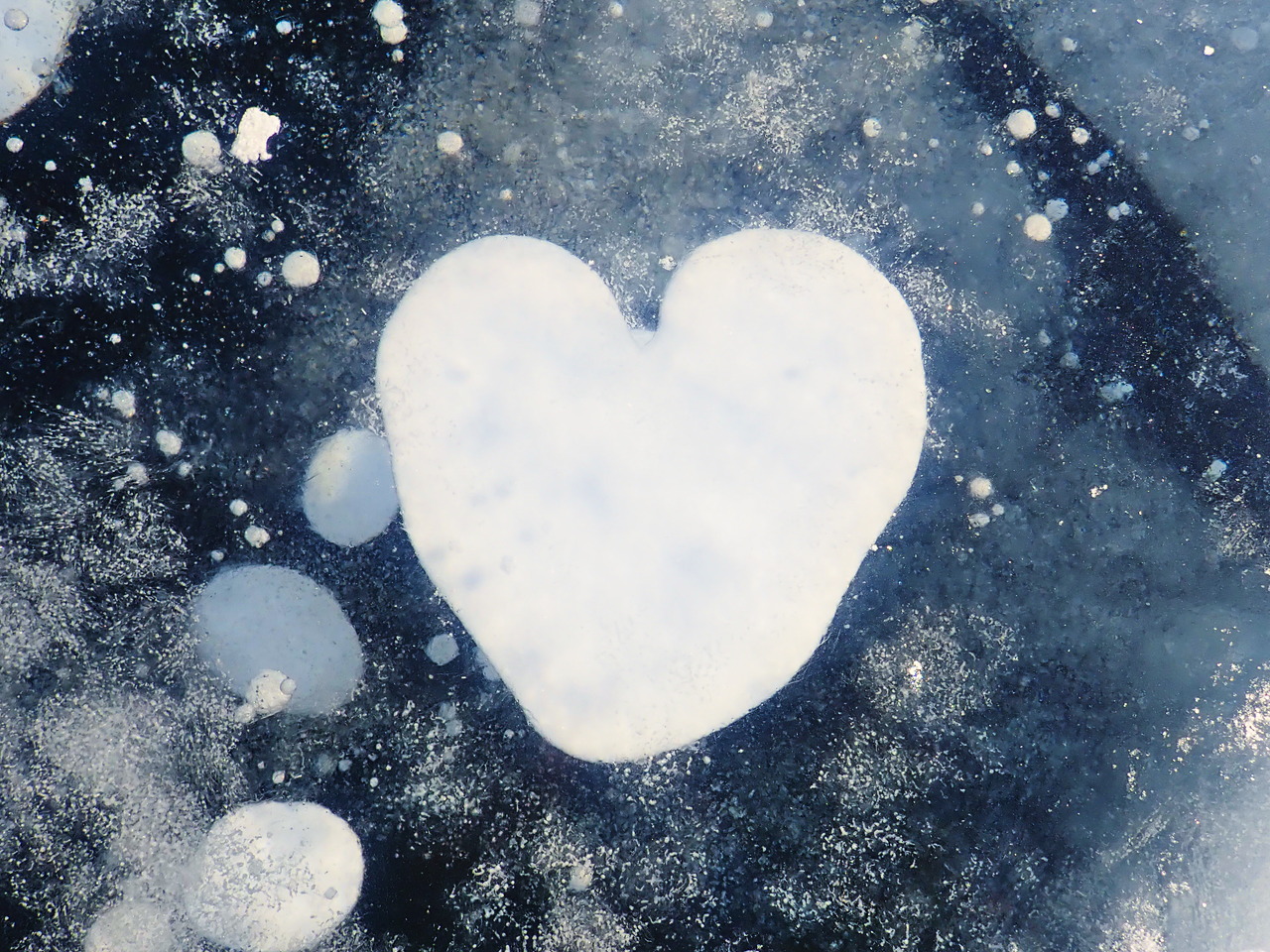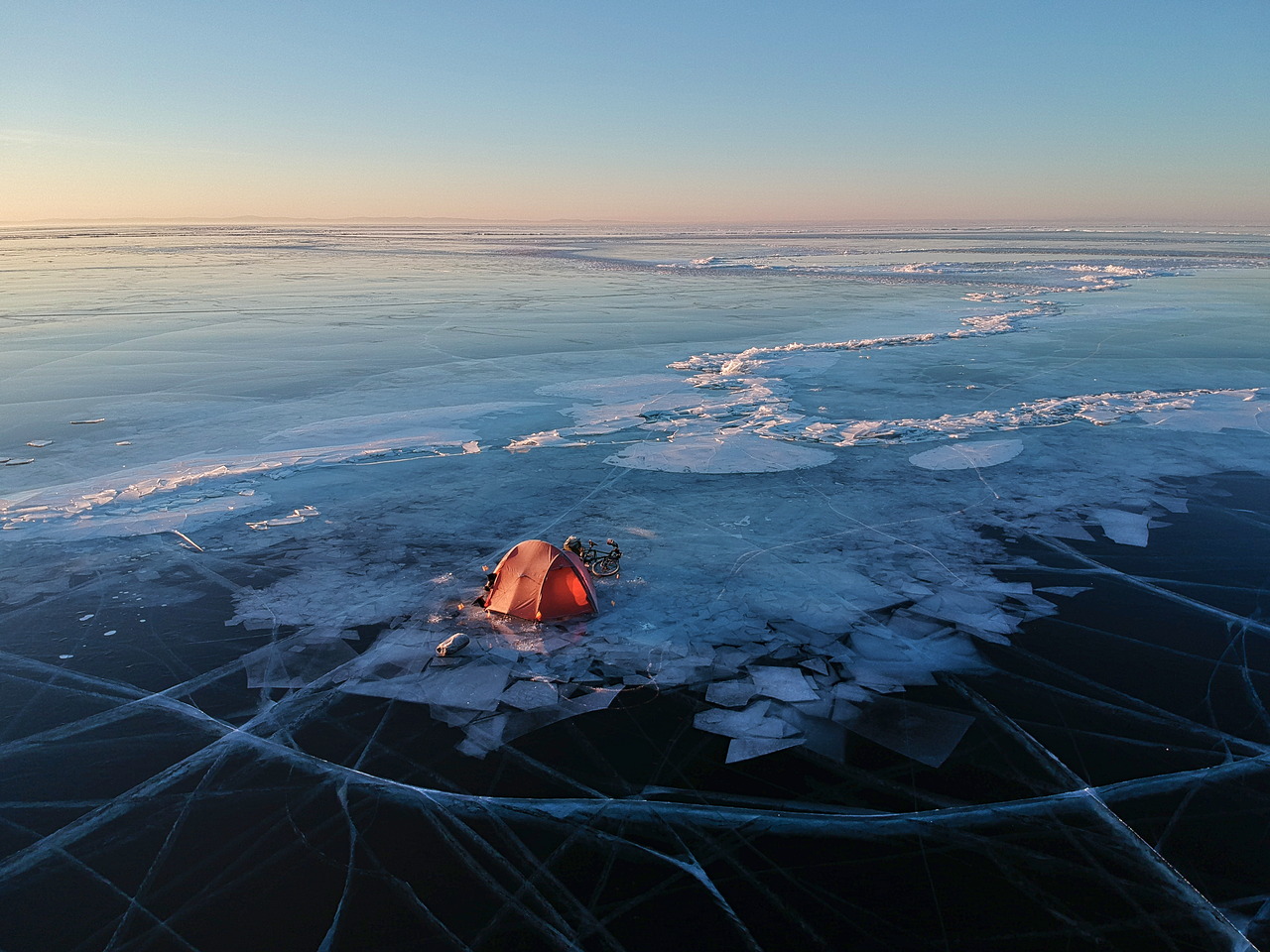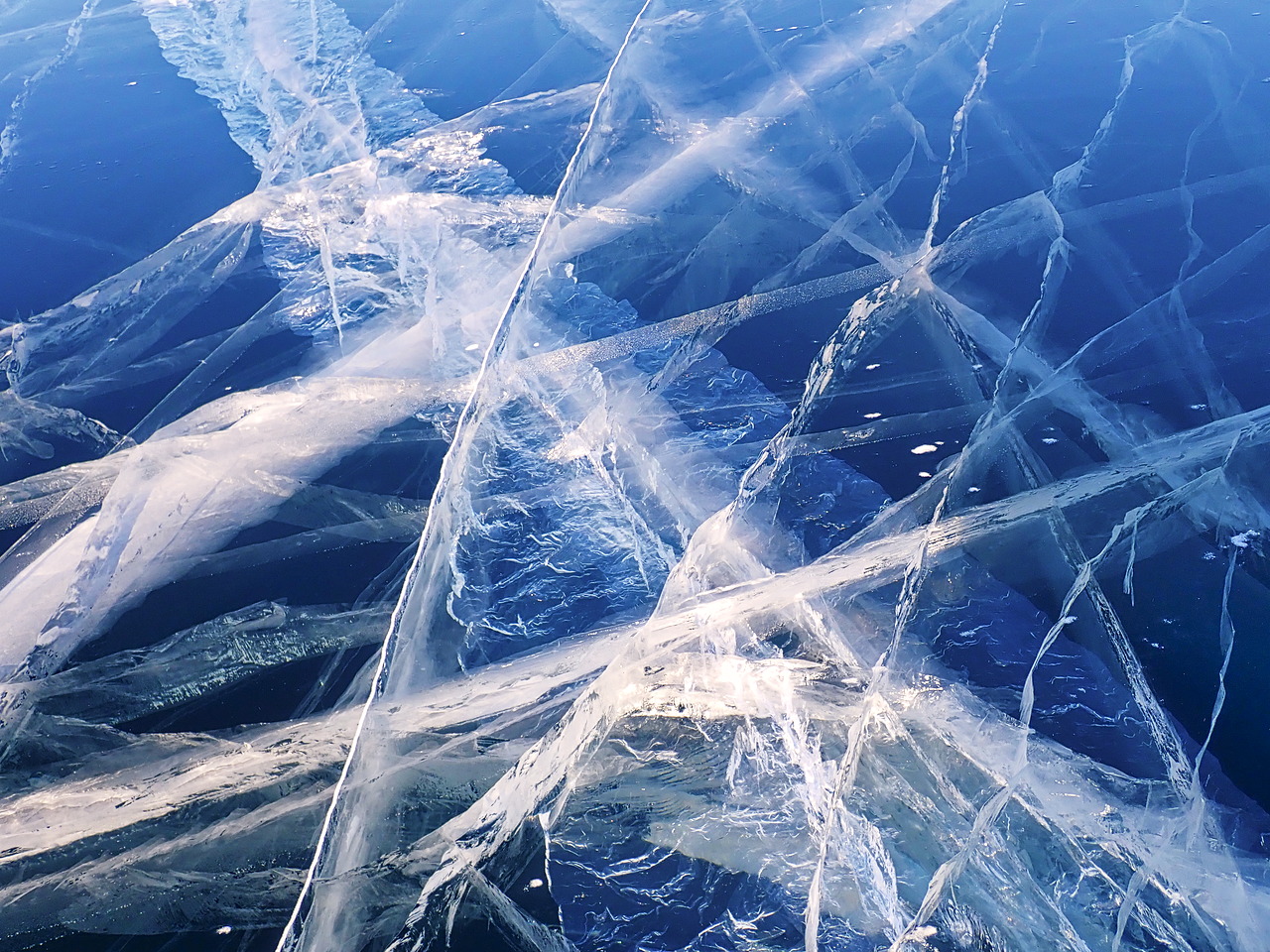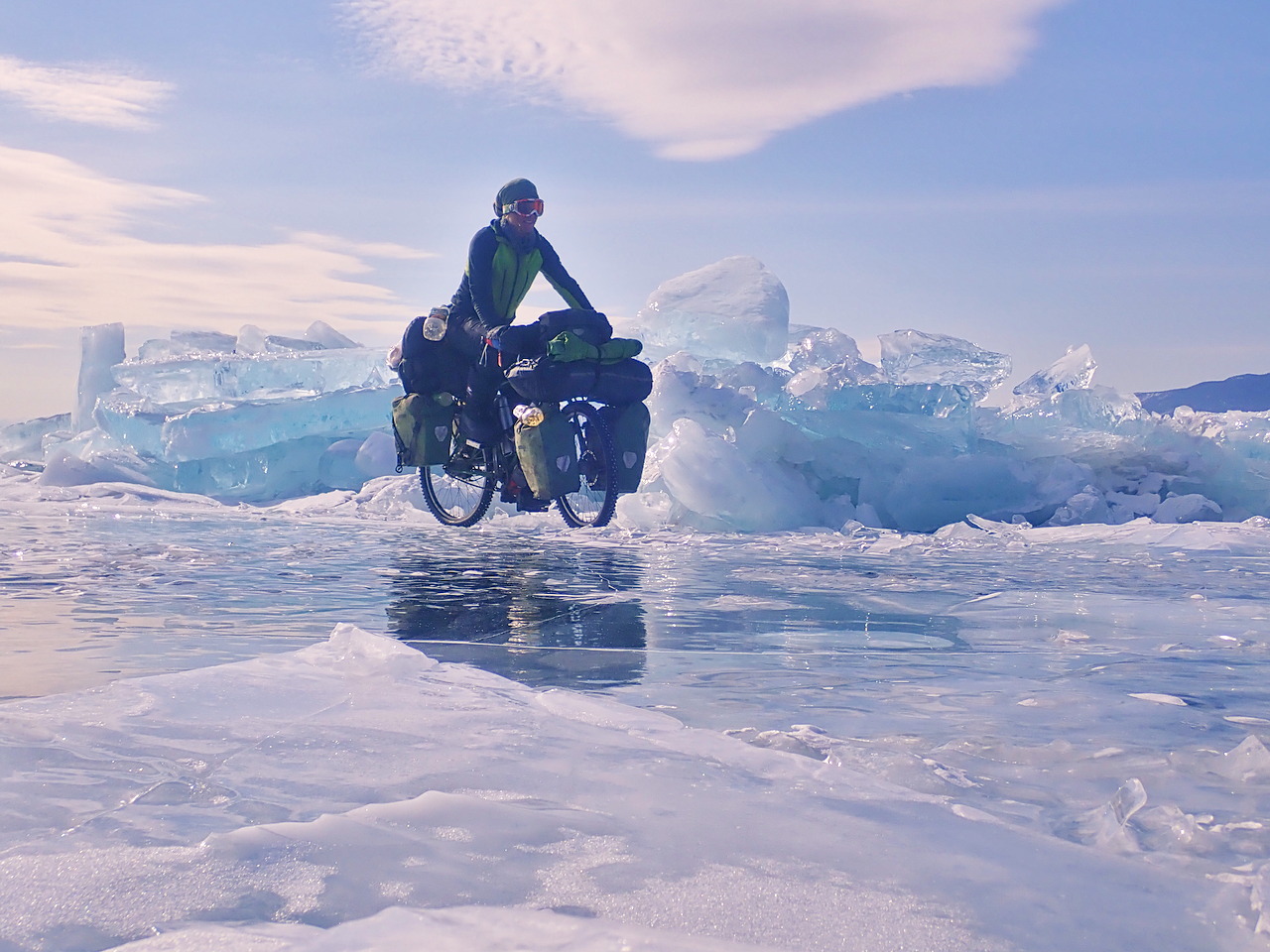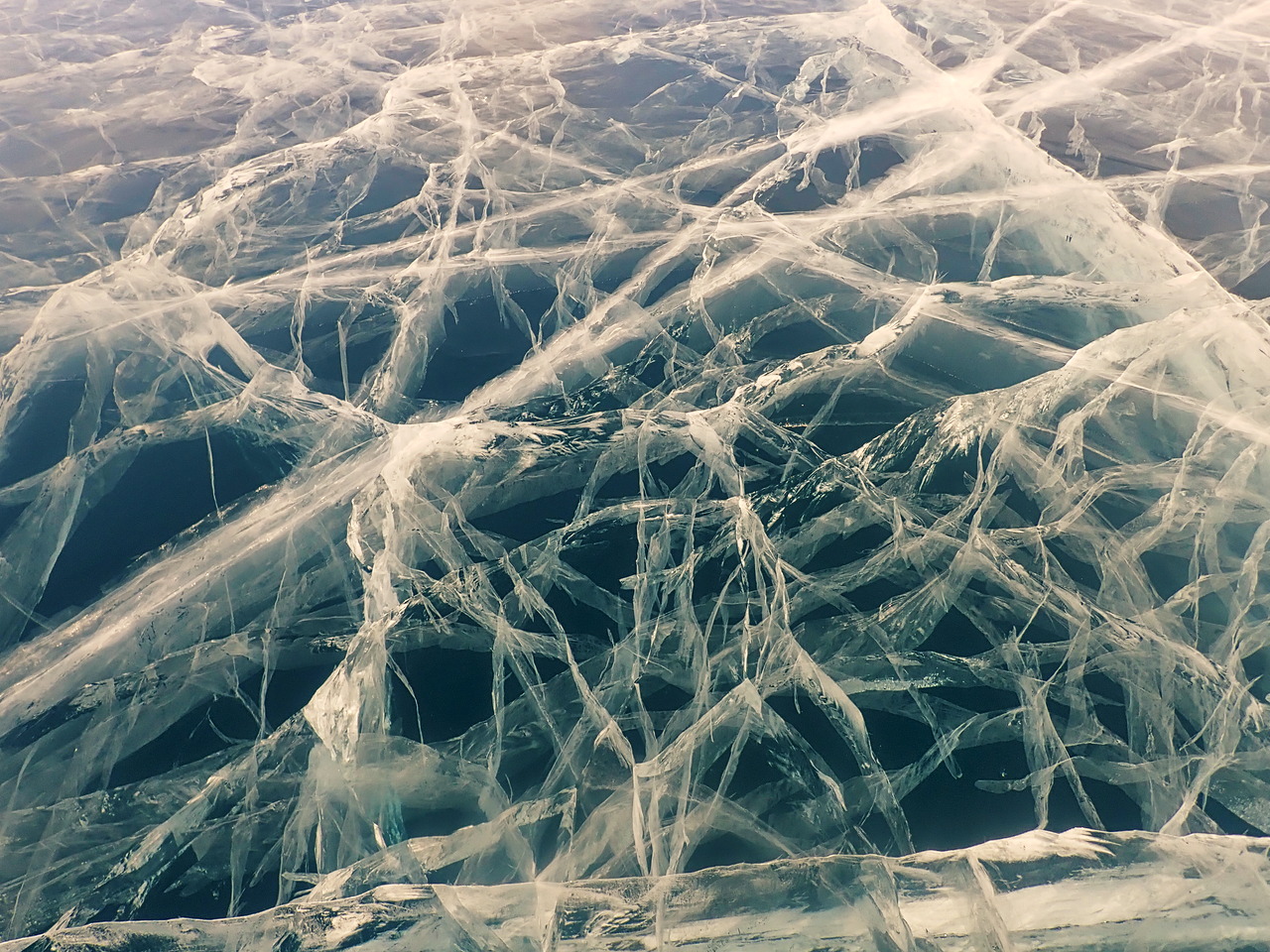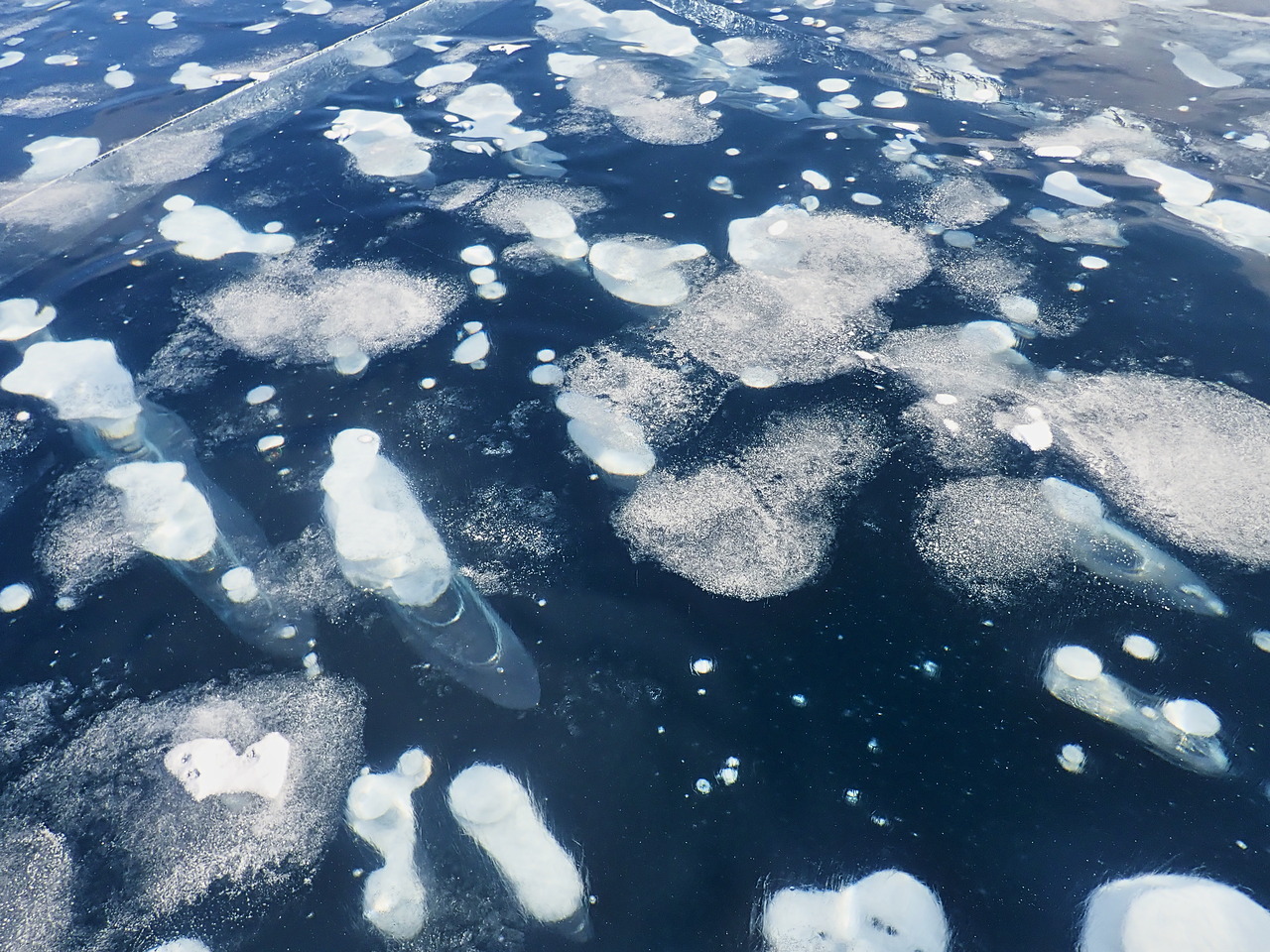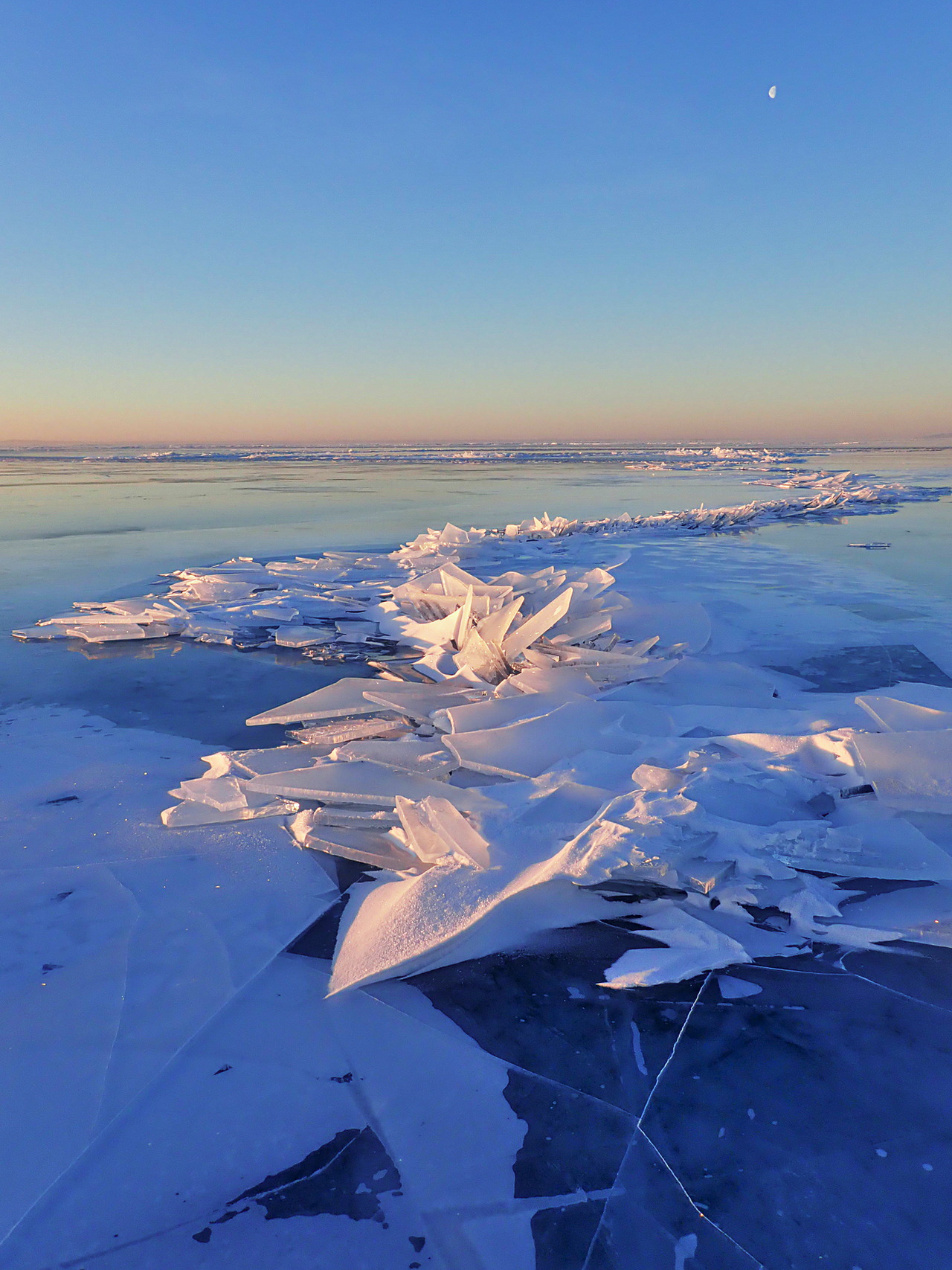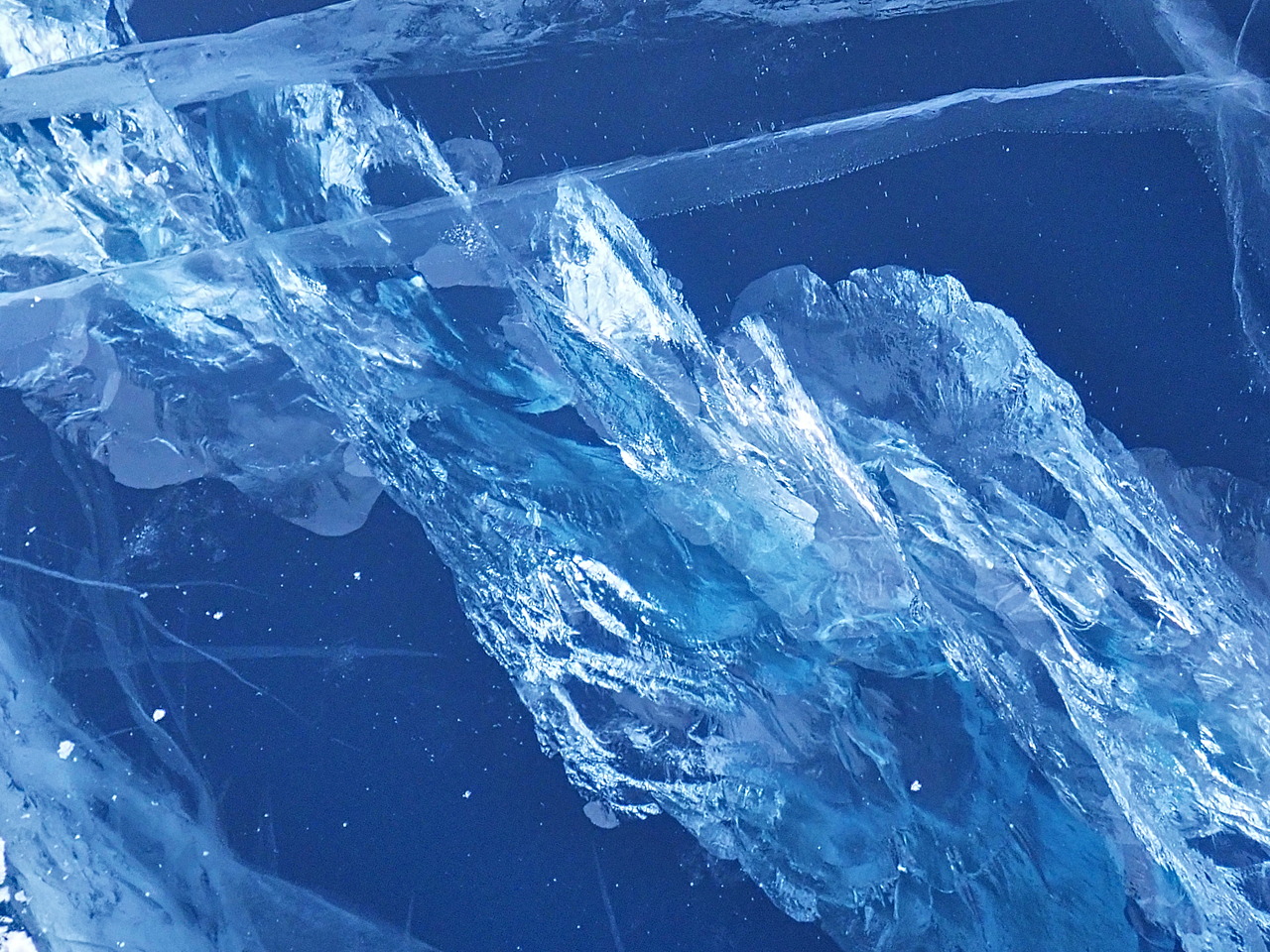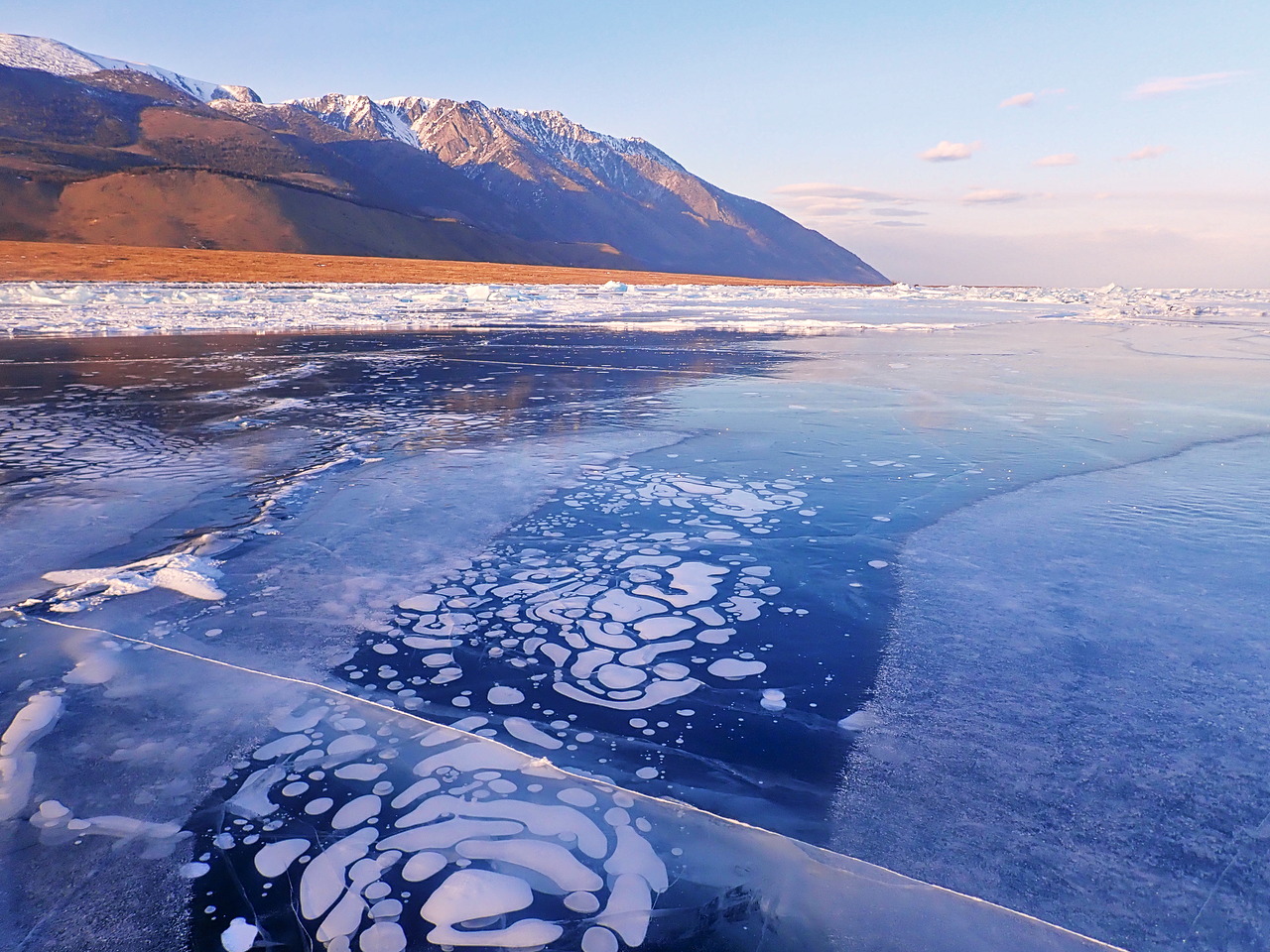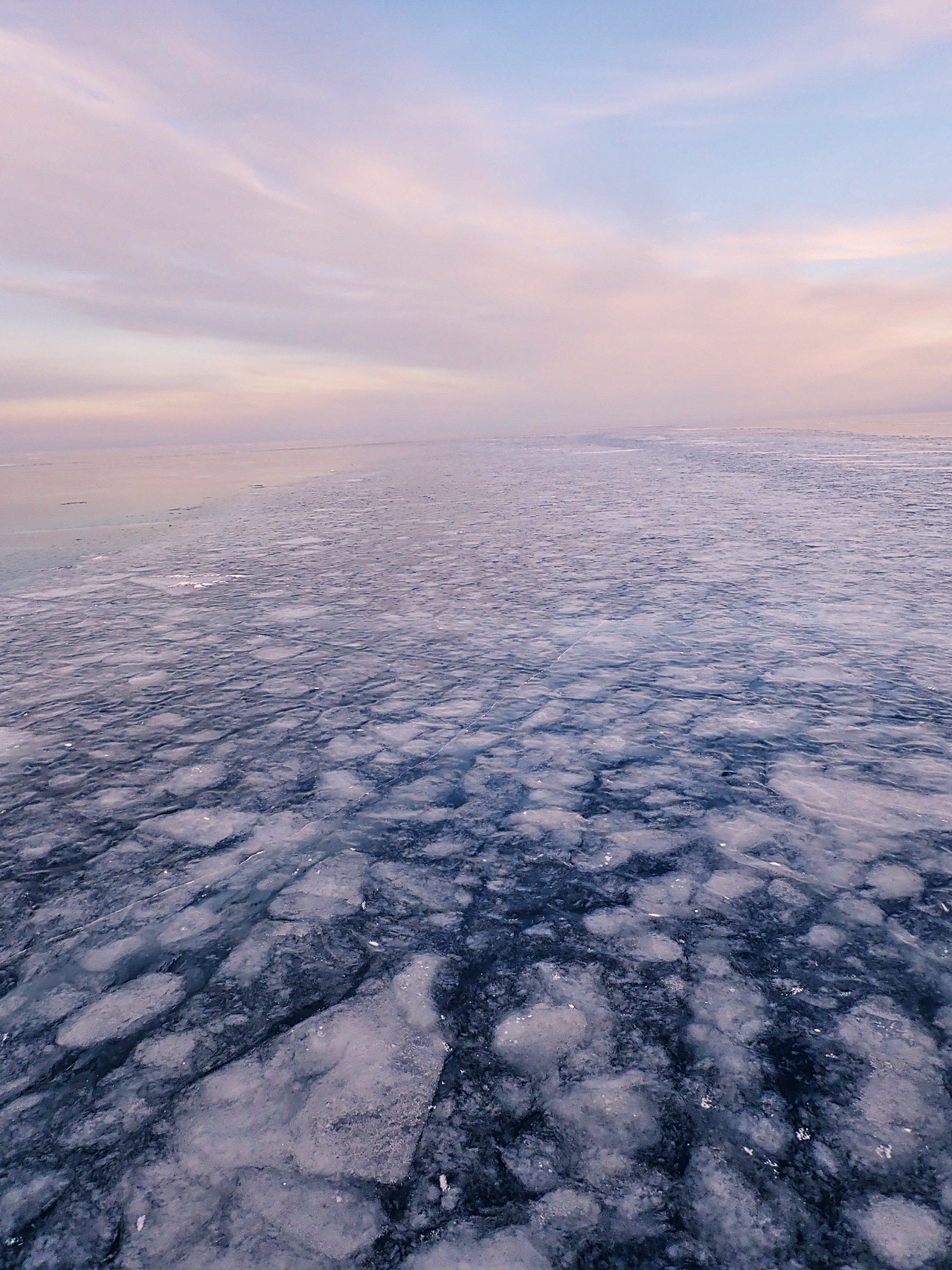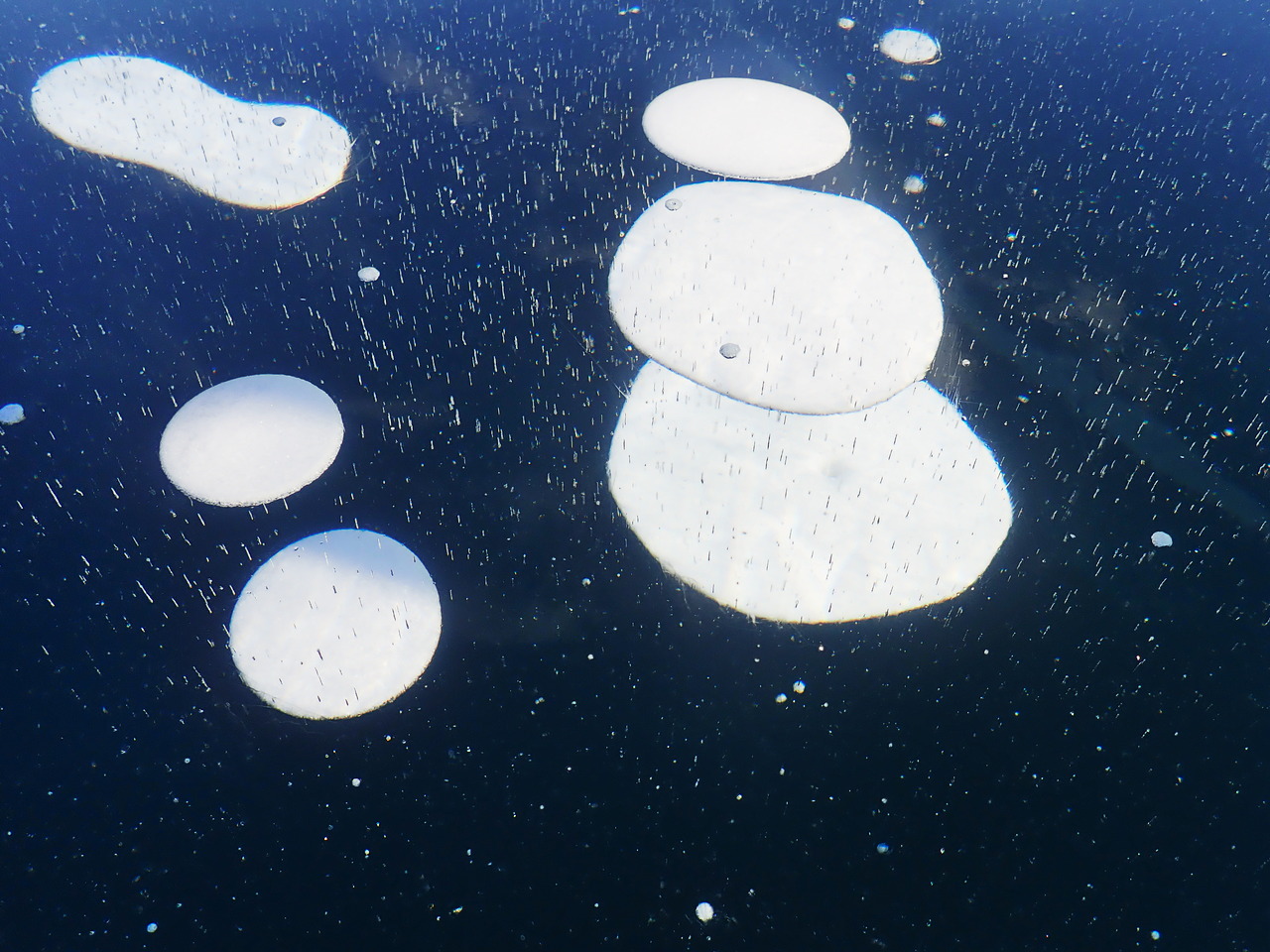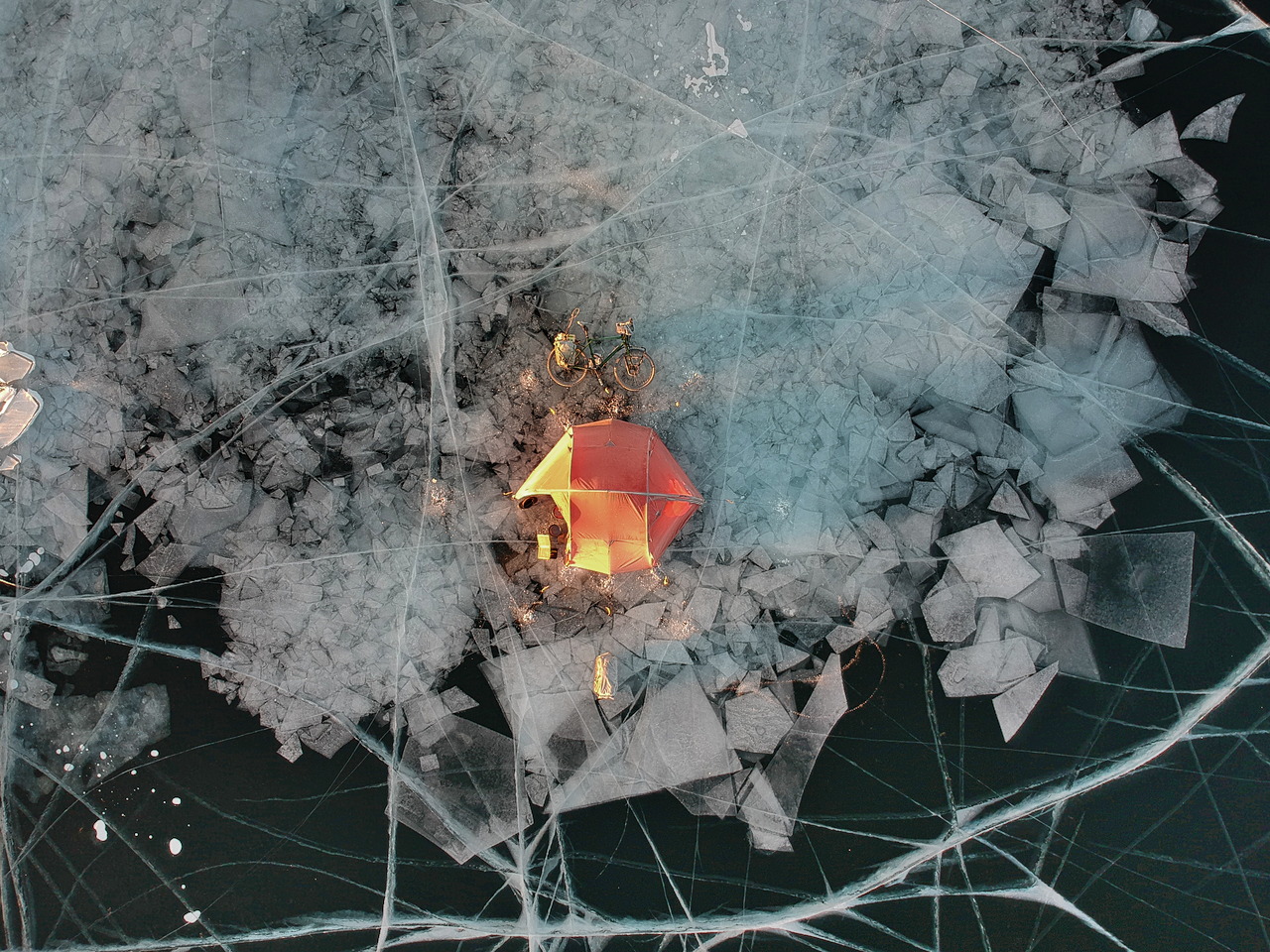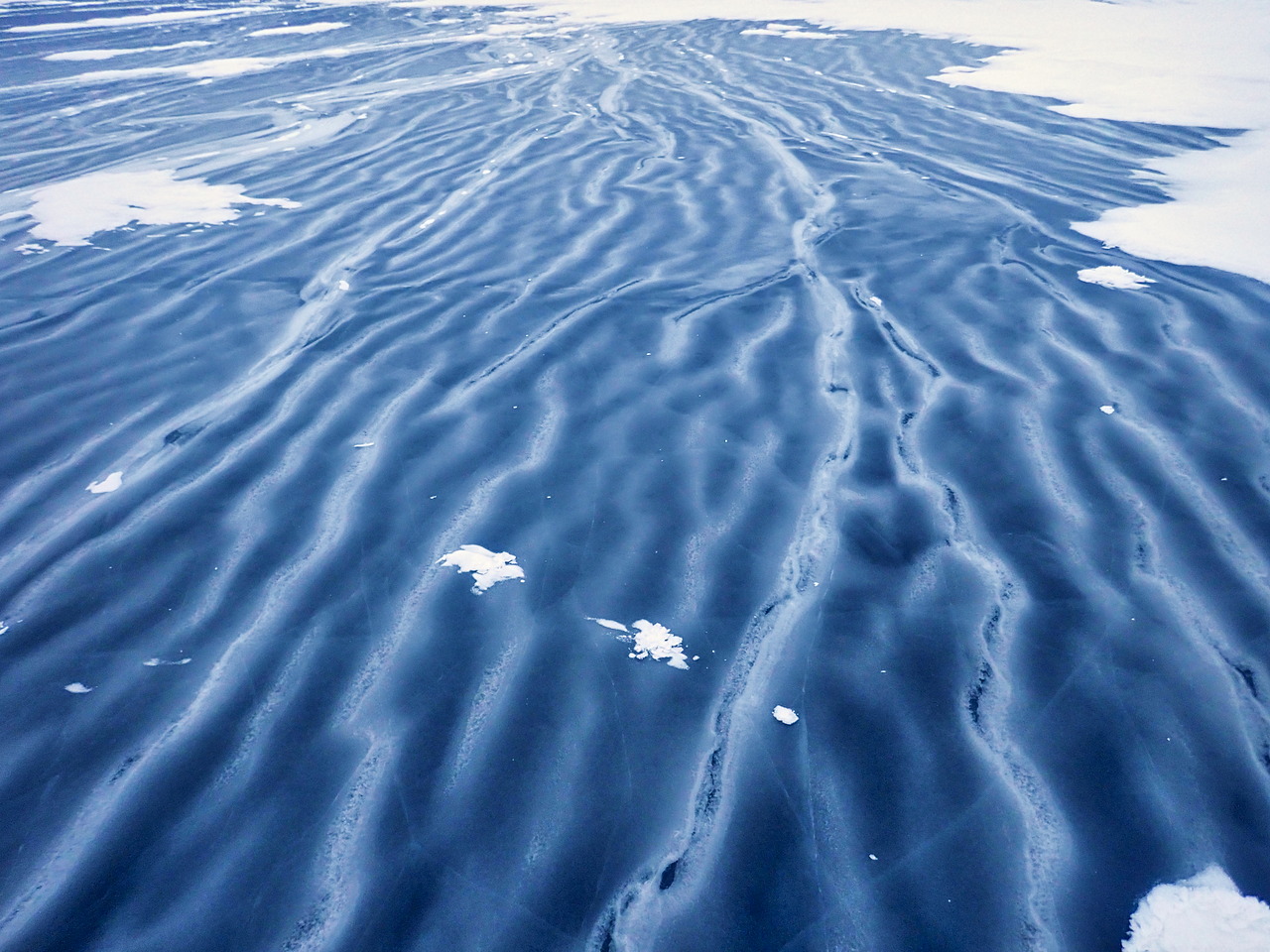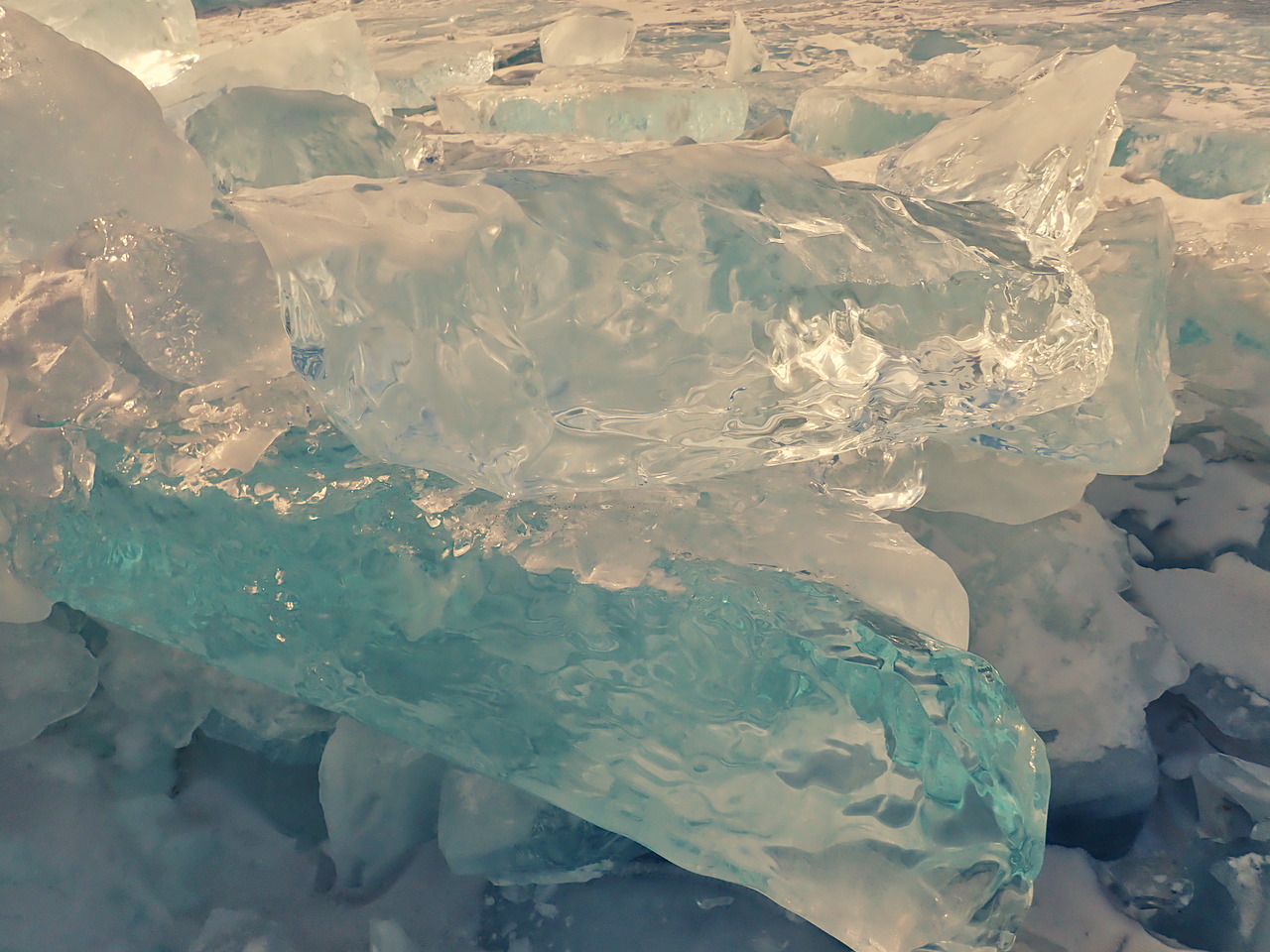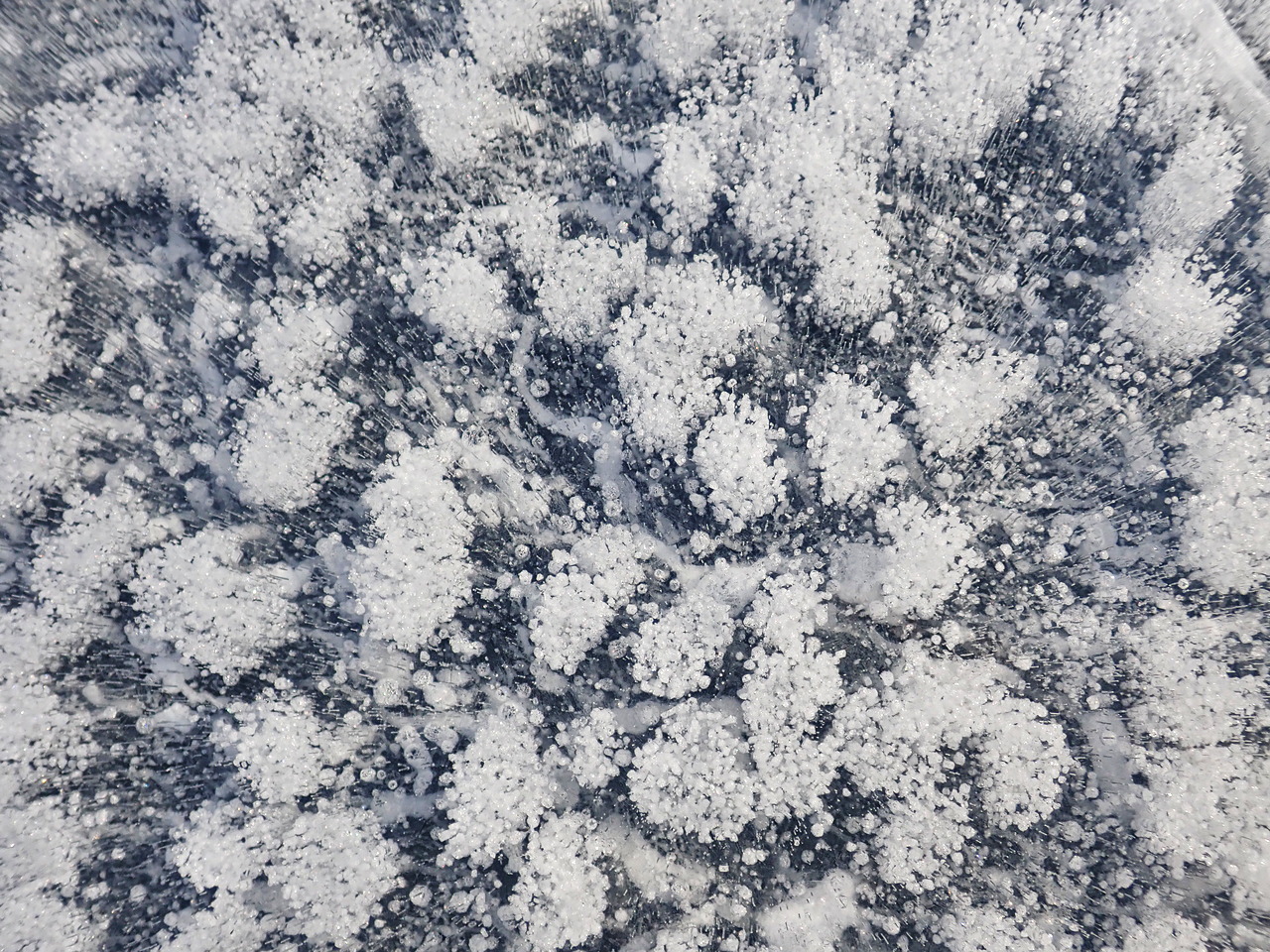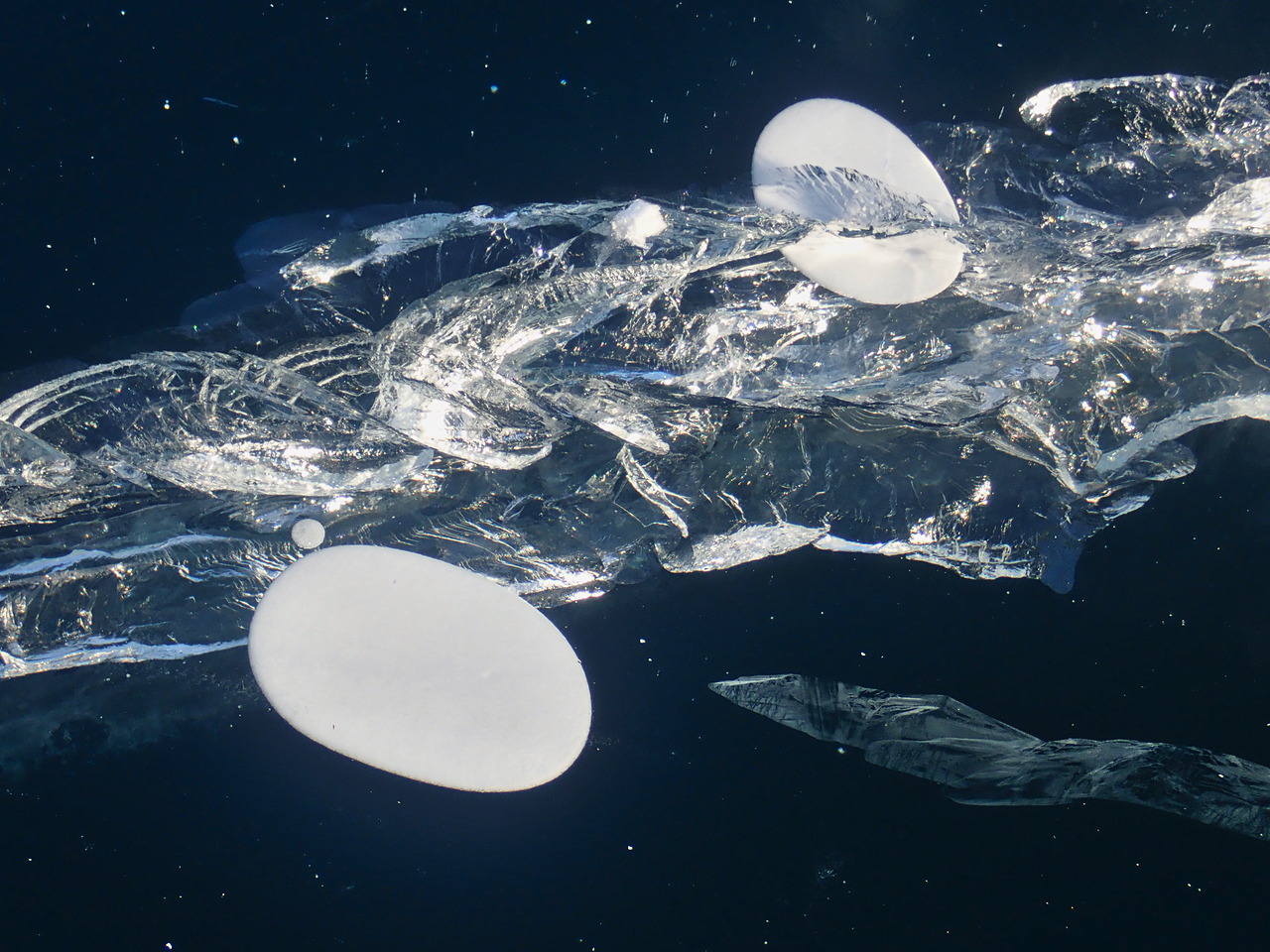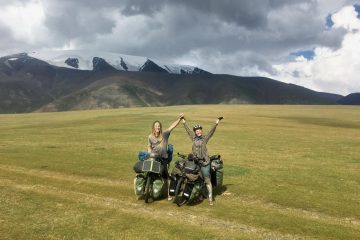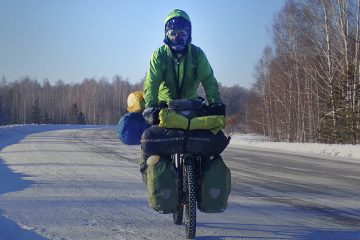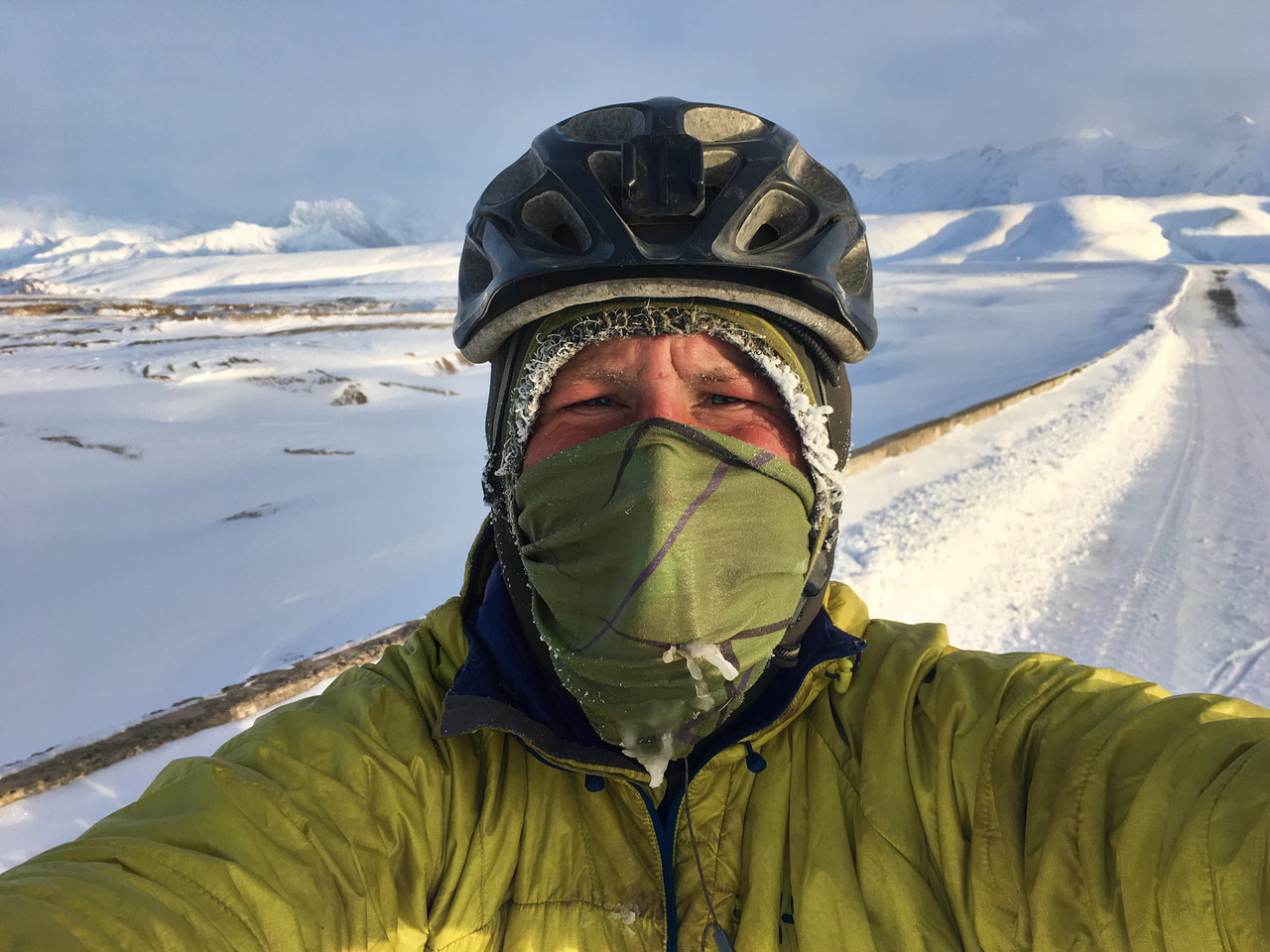Baikalsee
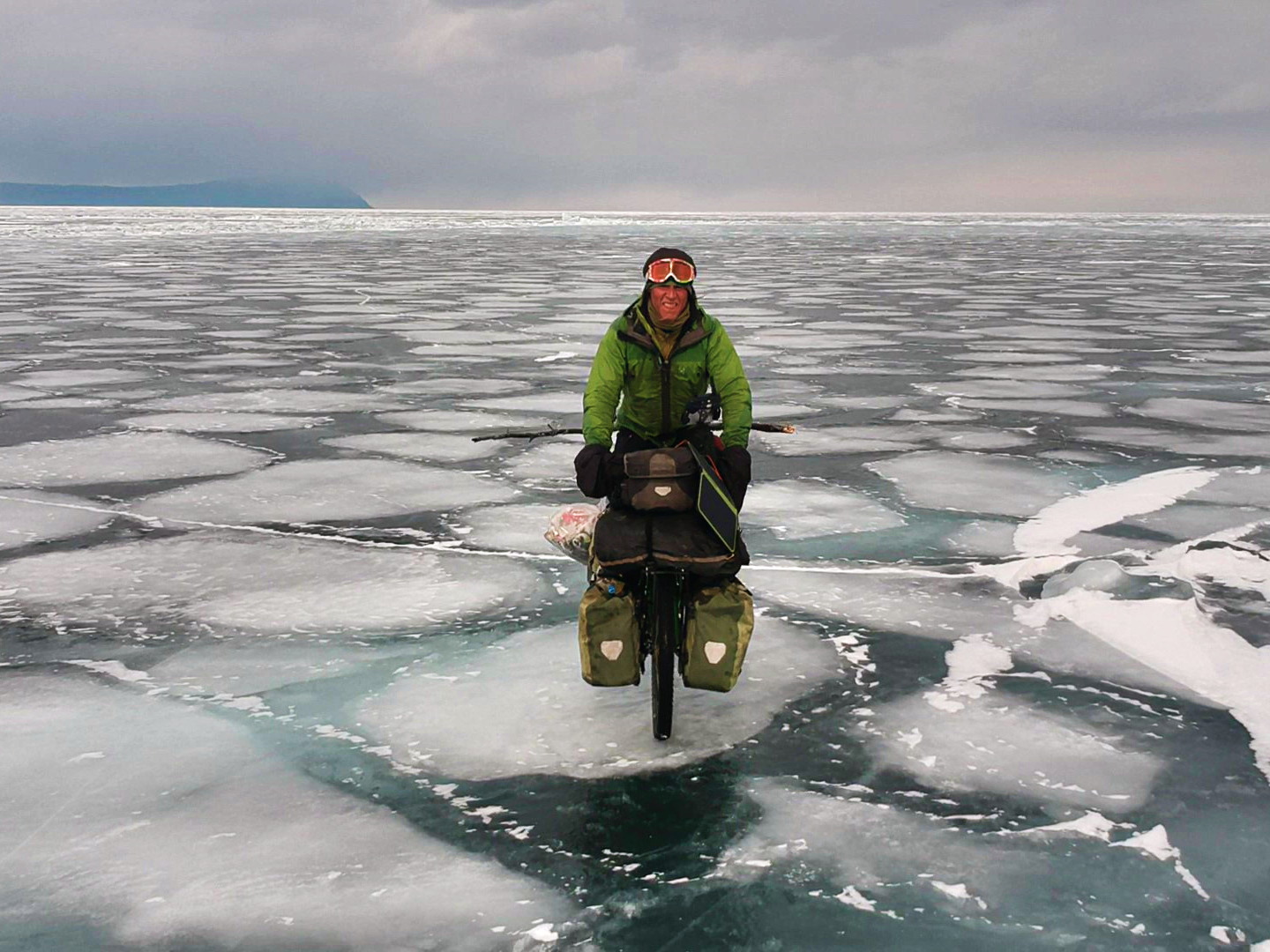
Im Februar und März 2019 umrundete ich den zugefrorenen Baikalsee in Sibirien innerhalb von 29 Tagen.
Sorry, dieser Beitrag wurde von mir noch nicht auf Deutsch übersetzt und ist deshalb nur in Englisch verfügbar. Eine Spende von dir würde es mir jedoch ermöglichen, unterwegs eine Auszeit in einem Guesthouse zu nehmen um weiter an der Übersetzung und Vervollständigung meiner Website zu arbeiten. Falls Englisch deine Muttersprache ist oder du sonst gute Englischkenntnisse hast, dann kannst du mich auch unterstützen, indem du Texte meiner Website übersetzt. Schreibe bei Interesse bitte eine E-Mail an info@marcmichel.ch.
Preparations in Irkutsk
In Irkutsk, I prepared my adventure on Lake Baikal. My initial plan was to cross the frozen lake from south to north. According to the satellite images from Nasa, there was a lot of clean ice on the lake and relatively little snow. I got in touch with Martin, a Danish adventurer who had crossed the lake a few years ago. He told me, that it took him 16 days plus two rest days to go from the north to the south. Because of the good ice conditions and the surprisingly warm weather at the end of February, I assumed to be able to cross the lake within two weeks. But I wanted to spend more time on the lake. So I decided to try to circumnavigate the frozen lake “by fair means”, i.e. transporting everything I needed on my bicycle from start to finish and only sleeping in my tent.
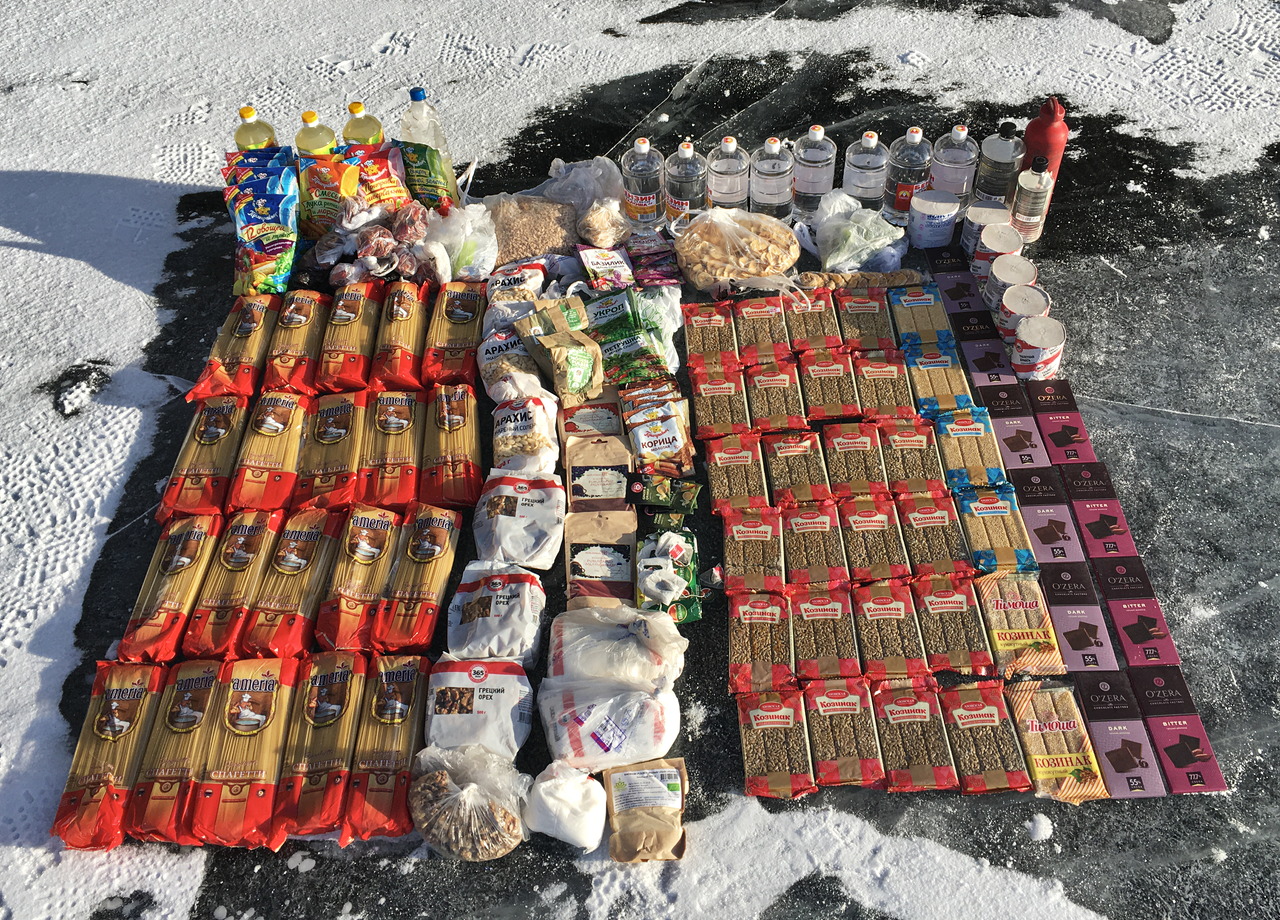
Hitchhiking to the lake
I decided to buy food and fuel (for my stove) for one month – that meant 39 kilograms of food and 10 litres of fuel. Moreover, I wanted to carry gear to withstand temperatures as low as -30 degrees. The weather forecast for the last ten days of February was much warmer than -30 degrees though and therefore surprisingly warm, but I knew that the temperature still could plunge below -30 degrees again in the middle of March like it had happened there in 2013. Because I knew that I would return back to Irkutsk after visiting Lake Baikal, I left everything that I didn’t need for the project in the hostel in Irkutsk. On 21st February, I left Irkutsk and I planned to cycle to Lake Baikal, which is located 100 kilometres away from Irkutsk. When I was leaving the town, a car stopped in front of me and the driver asked me where I was going to. “Kultuk. Lake Baikal”, I said. The driver told me that he was also going there and that he could take me and my bike there if I wanted. This offer sounded amazing, but I was afraid that my bike and all my bags wouldn’t fit inside the car. “No problem”, was his answer. When I realized, that his partner was in the car as well, I couldn’t imagine that it is possible to transport everything. When the man opened the trunk, I couldn’t believe what I was seeing: there were already two bikes and skies inside the car. But the couple assured that we will fit everything inside – and they were right! We drove through the hilly area towards Lake Baikal and arrived in Kultuk at the southern end of the lake in the late afternoon of 21st February.
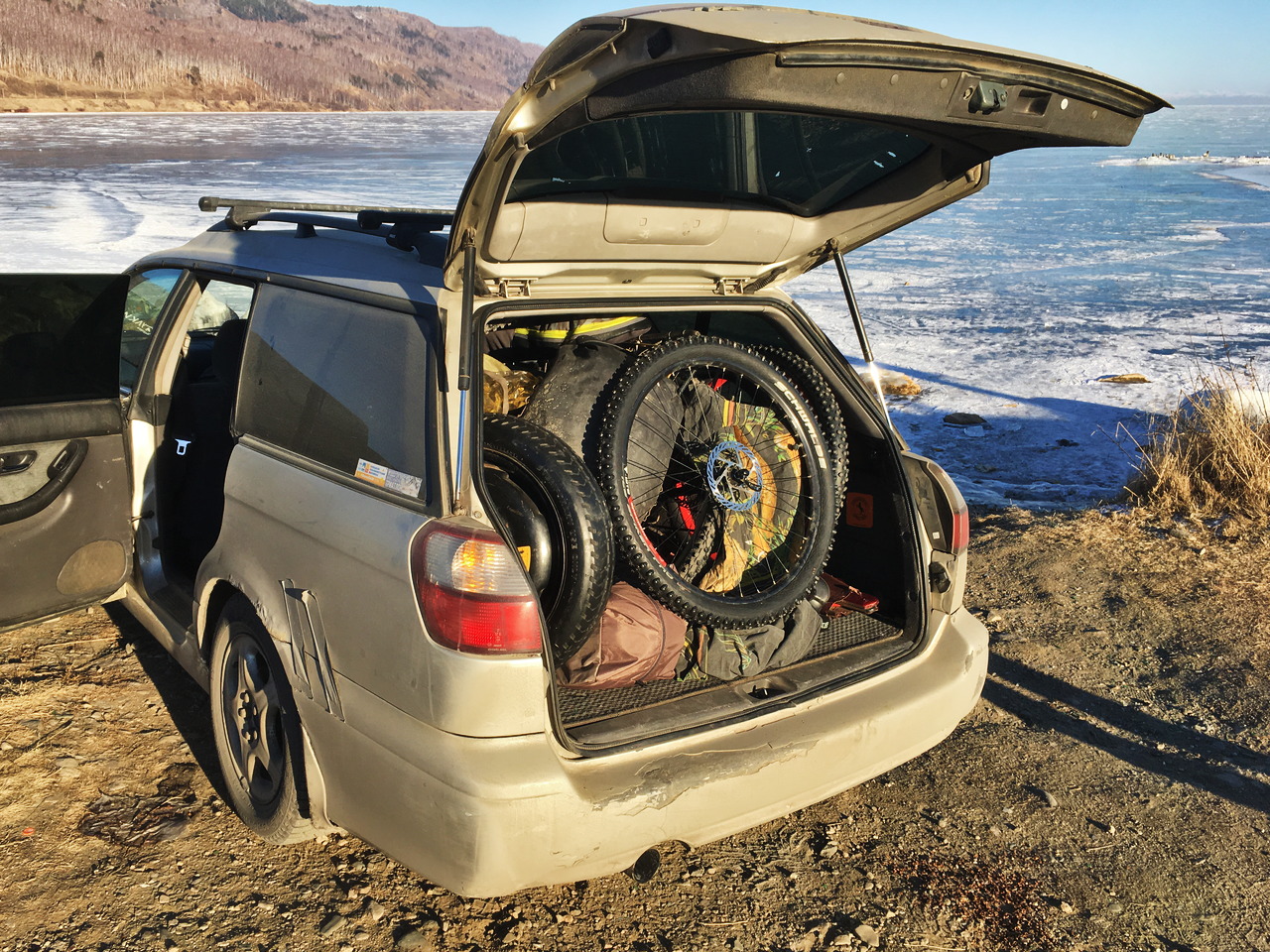
The couple just went for a short ride on the frozen lake. I intended to cycle only a little bit and pitch my tent early because I had never pitched my tent on ice and I was sure that there were a lot of tricks to figure out. But I wasn’t totally unprepared. I knew that ice screws, which are usually used by ice climbers, can be used to anchor a tent on a frozen lake. That’s why I had organized four used ones from Switzerland. I managed to successfully pitch the tent close to the shore. In the evening and during the night, I could hear the ice cracking many times, but I knew that it only sounded scary.
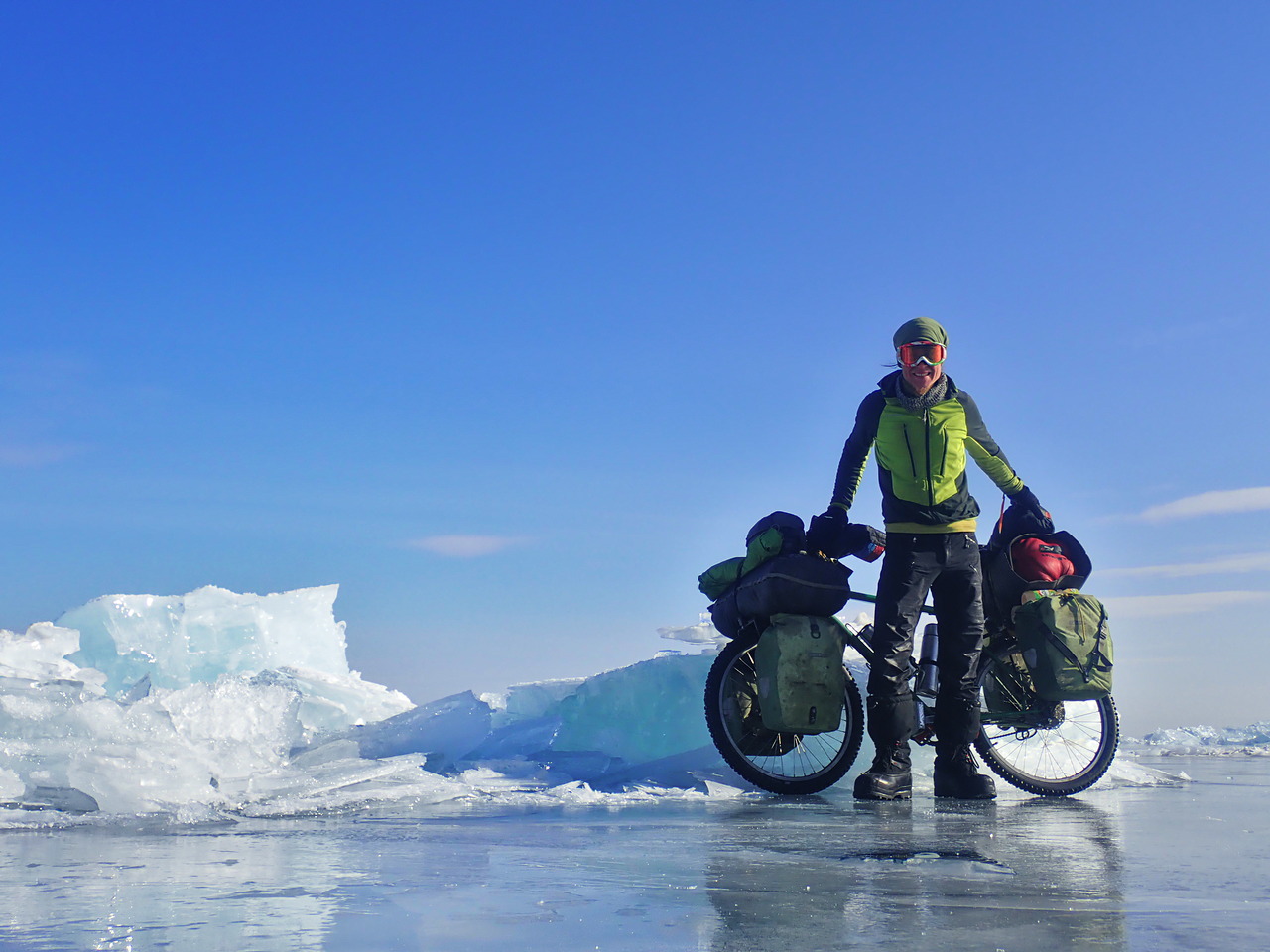
Good Conditions
During the first week, the conditions on the western shore of the lake were very good. There was usually only very little or no snow at all on top of the ice and I made good progress. Cycling on the frozen lake was amazing. I could see a lot of beautiful patterns and white bubbles on the ice. I stopped many times to take pictures of this artwork from mother nature.
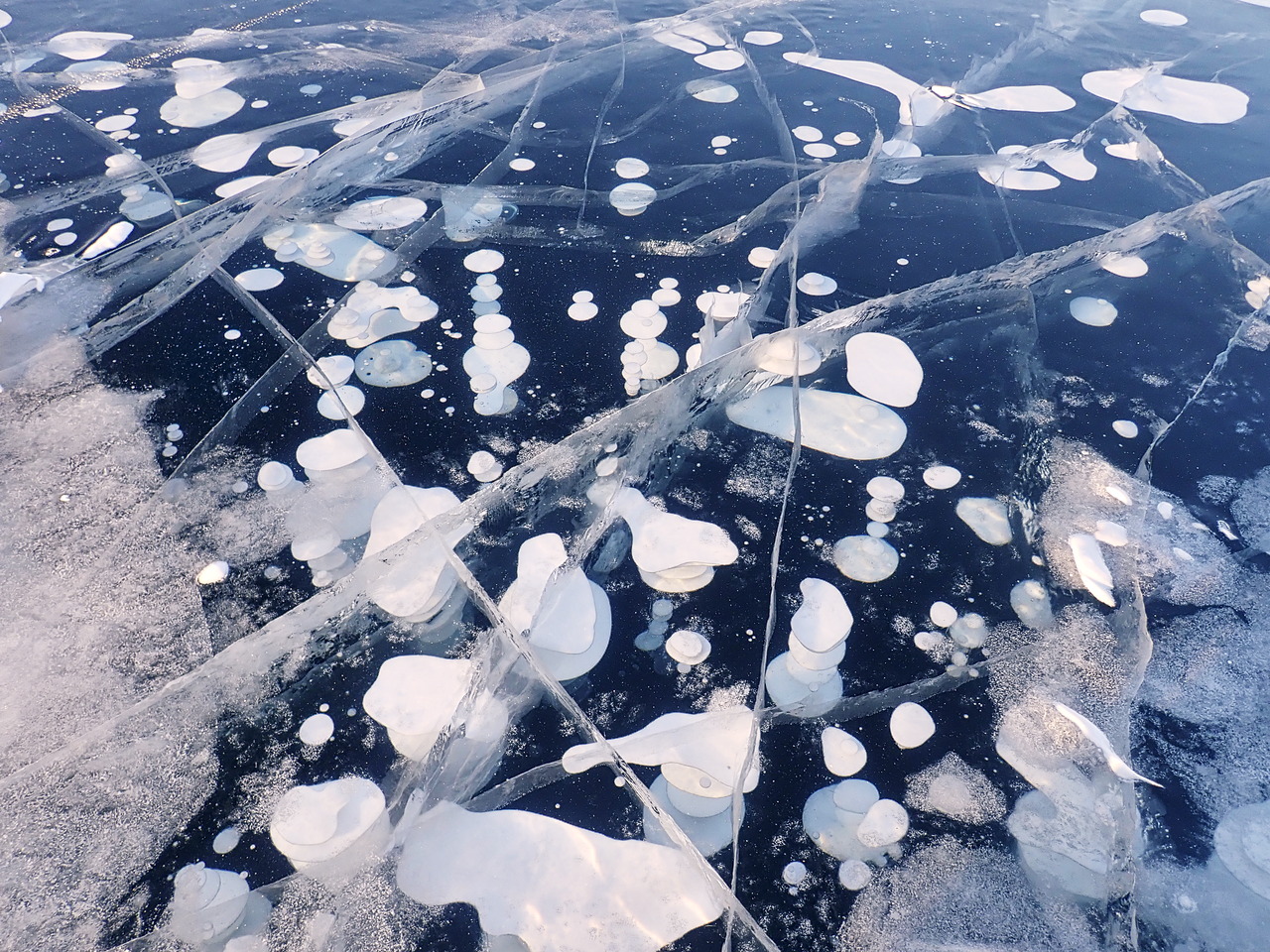
Thanks to my drone, I could also take pictures from above, which gave me the possibility to see and capture this art from another perspective as well.
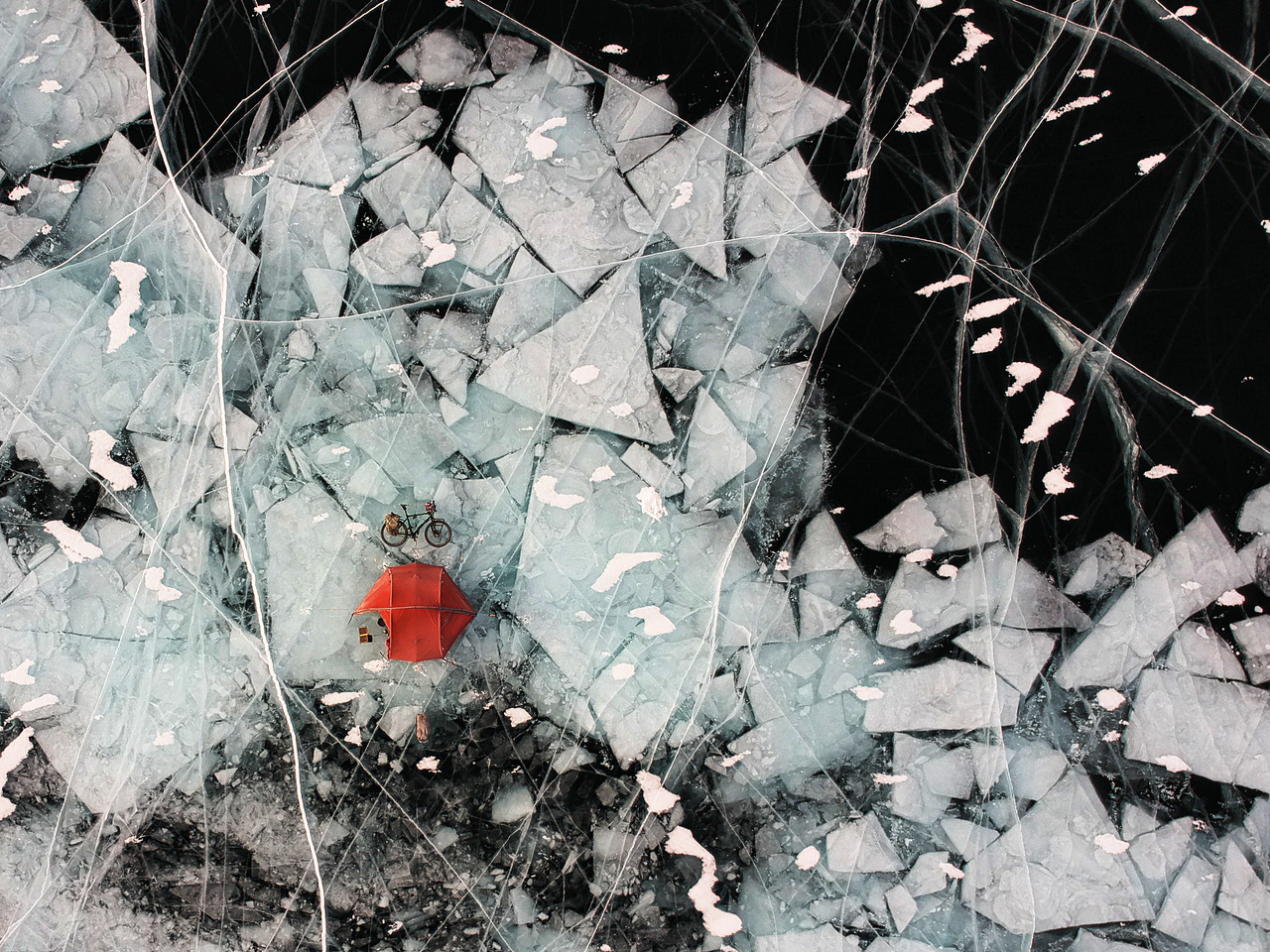
Snowy Area
In the north, there was snow on the ice, but often I kept finding tracks of cars that made pushing my bicycle easier and sometimes even allowed me to cycle. On 4th March, after 11 days on the lake, I already rode past the town of Severobaykalsk, which is the main town in the north of the Lake. I continued to the northeastern end of the lake and then continued south, where the lake was covered with a relatively thick layer of snow. When I didn’t have good tracks from cars, I made very little progress. After a few days of struggling, I found a good track again. The ruts on the track went all the way to the ice and so I could cycle relatively fast again.
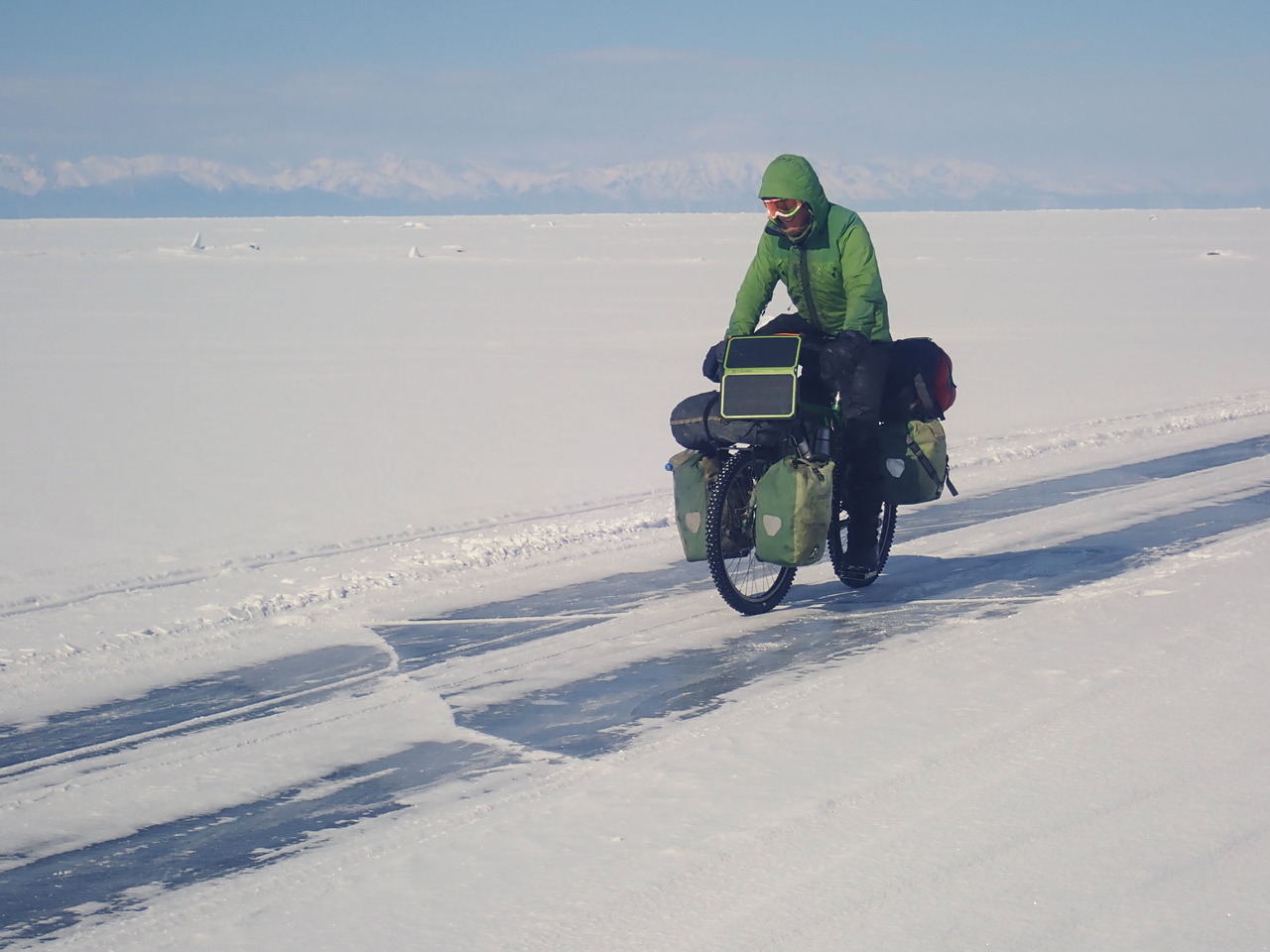
After a snowy and windy night, the ruts were covered with snow again and instead of cycling fast I was either cycling slowly or even pushing my bike.
Bad Conditions
On the afternoon of 12th March, I was finally back on mostly snow-free ice. But two days later, I got into a blizzard. Fortunately, the strong wind blew the fresh snow away overnight. On 18th March, I got into another blizzard. The very poor visibility made the progress slow and even led to a shoe filled with water. In the morning of 19th March, ten to twenty centimetres of fresh and soft snow covered the smooth icy surface of the lake, making even pushing the bike very difficult. For safety reasons, I left the lake in Boyarskiy that day after 1340 kilometres on the lake and continued on the road. On 22nd March, I was back in Kultuk where I had started 29 days earlier, which made (at least technically) my unsupported tour around Lake Baikal complete.
Used and Recommended Equipment
Tires: Ice Spiker Pro from Schwalbe
Tent: Orion II Extreme from Exped
Sleeping mat: SynMat TT 9 LW from Exped
Packsack: Fold Drybag Endura 50 from Exped
Sleeping bag: Tyin MTI 5-Season from Mammut
Gloves: Arctic Hummer from Veloplus
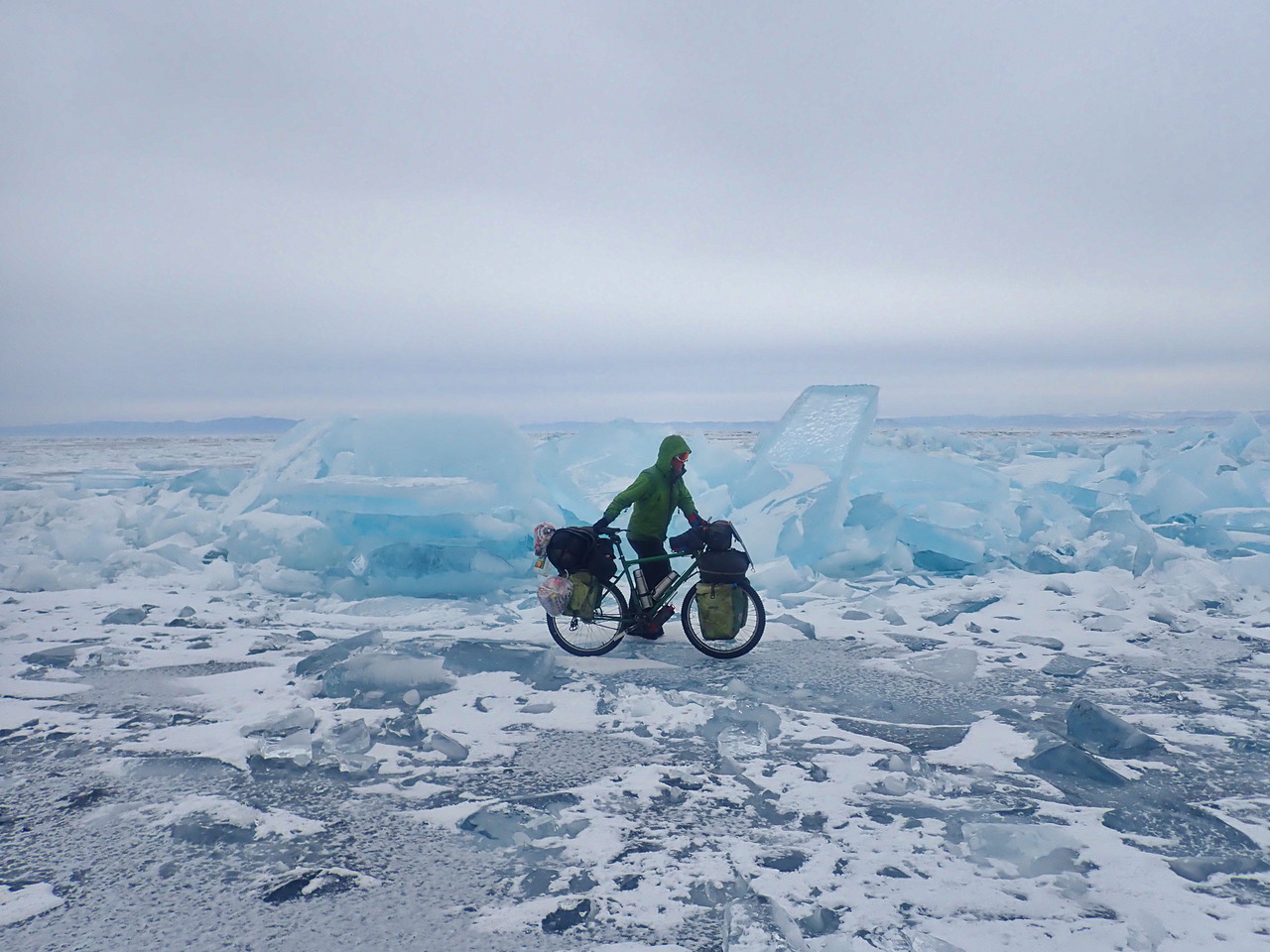
Pictures
Of course, I could tell you much more about the whole expedition and I might write more about it in the future or even produce a video – I have o lot of impressive clips. But for now, the text above and the following pictures must be enough.
- Eislandschaft
- Vollbepacktes Auto am Baikalsee
- Zelt auf dem Baikalsee
- Herz des Baikalsees
- Bläschen und Risse
- Zelten auf dem zugefrorenen Baikalsee
- Risse im Eis
- Mit dem Fahrrad auf dem Baikalsee
- Viele kleine Risse
- Bläschen im Eis des Baikalsees
- Morgenstimmung
- Eiskunst
- Vielfalt des Eises
- Nahrung und Brennstoff für einen Monat
- Beeindruckende Struktur
- Posieren auf dem Baikalsee
- Unterwegs auf einem Track
- Fahrrad durch unebenes Eisfeld schieben
- Bläschen im Eis
- Zelt Orion II von oben
- Milchiges Eis
- Zelt Orion II Extreme von Exped auf dem Baikalsee
- Eisblöcke auf dem Baikalsee
- Interessante Struktur
- Kunstwerk
- mit dem Fahrrad auf dem zugefrorenen Baikalsee
